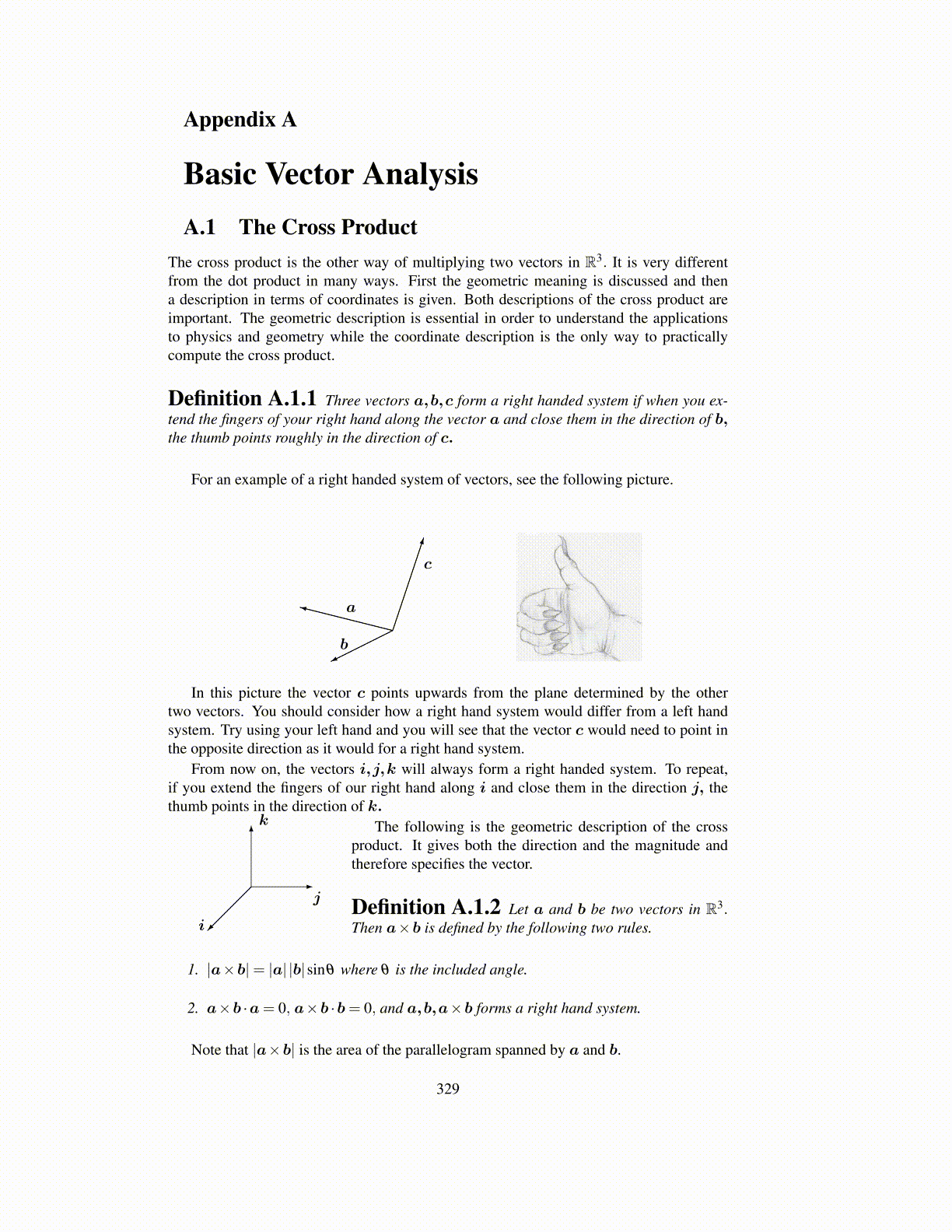
Appendix A
Basic Vector AnalysisA.1 The Cross Product
The cross product is the other way of multiplying two vectors in R3. It is very differentfrom the dot product in many ways. First the geometric meaning is discussed and thena description in terms of coordinates is given. Both descriptions of the cross product areimportant. The geometric description is essential in order to understand the applicationsto physics and geometry while the coordinate description is the only way to practicallycompute the cross product.
Definition A.1.1 Three vectors a,b,c form a right handed system if when you ex-tend the fingers of your right hand along the vector a and close them in the direction of b,the thumb points roughly in the direction of c.
For an example of a right handed system of vectors, see the following picture.
a
b
c
In this picture the vector c points upwards from the plane determined by the othertwo vectors. You should consider how a right hand system would differ from a left handsystem. Try using your left hand and you will see that the vector c would need to point inthe opposite direction as it would for a right hand system.
From now on, the vectors i,j,k will always form a right handed system. To repeat,if you extend the fingers of our right hand along i and close them in the direction j, thethumb points in the direction of k.
k
i
j
The following is the geometric description of the crossproduct. It gives both the direction and the magnitude andtherefore specifies the vector.
Definition A.1.2 Let a and b be two vectors in R3.Then a×b is defined by the following two rules.
1. |a×b|= |a| |b|sinθ where θ is the included angle.
2. a×b ·a= 0, a×b ·b= 0, and a,b,a×b forms a right hand system.
Note that |a×b| is the area of the parallelogram spanned by a and b.
329